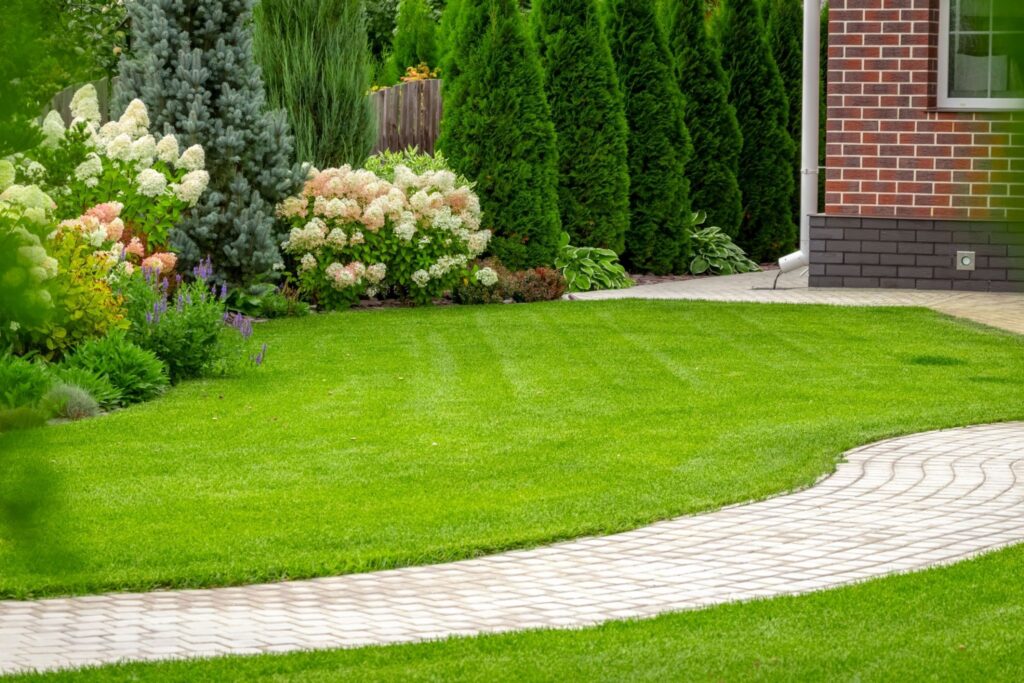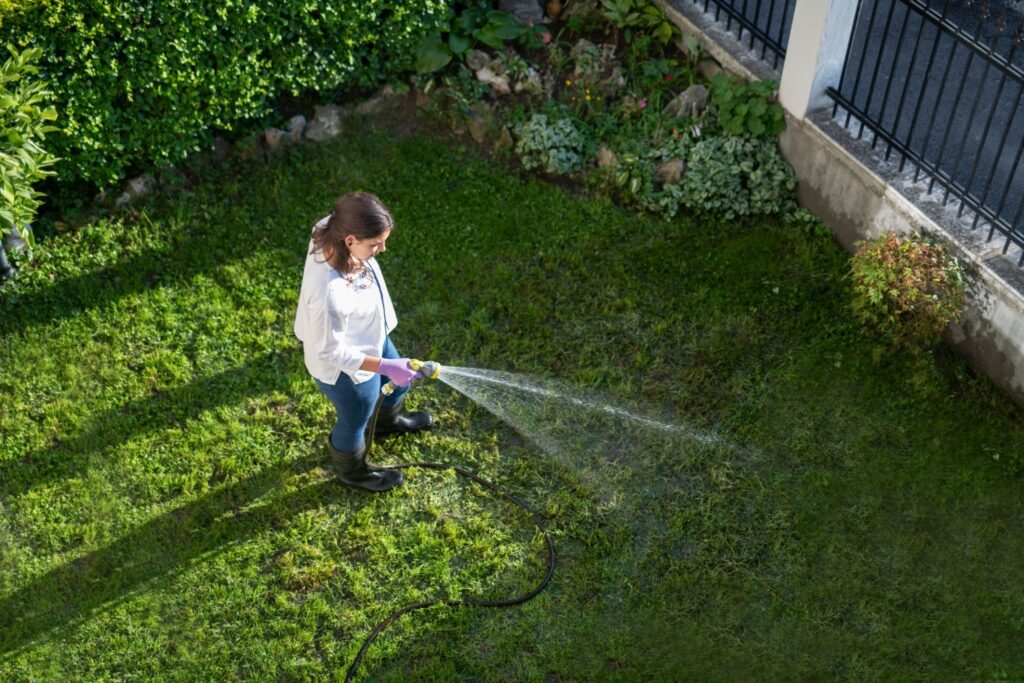A lush, green lawn enhances any yard. While we all know a patch of beautiful, healthy grass adds a specific appeal to any home, maintaining a nice natural carpet made of grass seems like a tiring task. Homeowners believe the only way to achieve and maintain beautiful greenery is to spend every weekend doing lawn work.
However, if you plan everything right, you too can have a gorgeous lawn. Anyone can. Growing grass isn’t rocket science, but it does require careful planning and following some essential steps.
Follow these steps to plant and grow a lush lawn this spring.

Test the Soil
Soil testing is crucial if you’re serious about lawn care. According to experts, it is the most critical part of growing grass.
Soils vary a lot, and it’s vital to know your soil pH and which nutrients it lacks to prepare the proper amendments. To understand how to work with the soil, you must know what it contains. Once you learn what type of soil you’re dealing with, you’ll know how to treat it and which grasses to plant.
The test results will give you a starting point.
Choose the Right Seed
Even with the richest soil in the world, you won’t achieve beautiful grass unless you plant the correct type. Not every grass grows on every ground, so you should always make sure to choose a mixture of grasses already known to grow and prosper in your area. Moreover, you should always select grasses that work best with your specific type of soil.
In addition to choosing the right seed, you must choose healthy grains. They are worth the investment because they allow your lawn to grow healthy from day one. This way, you won’t need to fill in empty patches to achieve a thicker lawn constantly.
A mix of grass seeds will work better than choosing only one type. When you plant several grass varieties, your lawn will be more protected from diseases and pests because you’ll always have healthy strands.
Planting
If you plan on creating a small lawn, it’s best to spread the seed by hand. Throw around 16 seeds per square inch and make sure they don’t crowd each other. If you add too many in one spot, the grass will grow weak and thin.
For more extensive lawns, it’s best to use a spreader to spread the seeds evenly. Whether you choose to use a manual or mechanical spreader, always stroll to cover the soil adequately. Never bury the seeds deeply because they require lots of light and sun to grow.
Once you plant the seeds, it’s time to feed them. Adding extra nutrients will help them grow faster and remarkably more potent. It usually takes anywhere between five and 21 days for grass seeds to germinate. They establish whole roots within a month to three months from planting.
It’s essential to keep in mind to stay off the grass because the delicate new seeds can’t withstand stress during the first several months.
Watering
The most critical thing newly planted grass seeds need in abundance is water. You should keep the seedbed moist at all times until your grass grows two inches high. Keep in mind to avoid saturation as it may wash away the seeds.
Light watering is necessary for the beginning. However, as the grass grows taller, it needs water more deeply but less frequently. You should water mature grass at least twice a week and make sure the water reaches at least six inches deep, so it helps root growth.

Maintenance
Achieving a lush green lawn is already a win on its own, but once you get there, it’s maintenance time. While it doesn’t require all of your free time, you will need to monitor the grass to keep your lawn healthy and beautiful.
You should keep an eye on moisture levels in particular, as dehydration and lack of moisture happen to be the leading cause of dying lawns. Specific fungus and disease can also hurt your yard, so you should keep an eye on any empty or unhealthy-looking patches and treat them accordingly.
Fertilizing your lawn is an integral part of proper maintenance, as every expert will agree. Gorgeous grass often needs feeding several times a week. Cool-season grasses need fertilizing right after germination, ending with October. On the other hand, warm-season grasses need feeding in the spring directly after you planted them.
Moving your lawn the right way is also a vital part of maintenance. Your grass won’t be healthy unless you trim it as much and as often as you should. To prevent disease, weakness, and weeds, never trim lower than one-third of the grass length. Also, always keep your blades sharp and adjust the moving pattern to your grass height and type.
Maintaining a gorgeous lawn may take some work, but it’s always worth it in the end. Professional landscaping companies like Growing Seeds of Change can help you with all the proper equipment and trained workforce. Not only will their team of professionals help you grow a healthy lawn, but they will also educate you on maintaining one for the years to come.